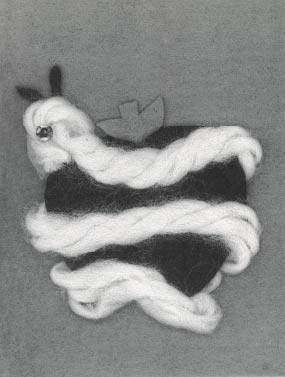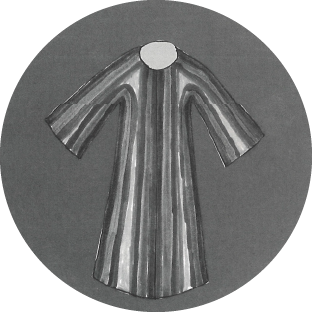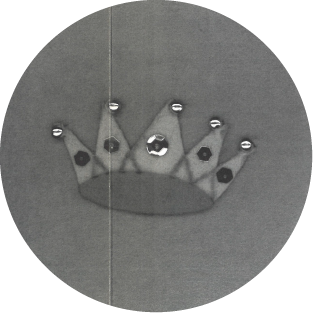Updated April, 2025
There's my apple, Mom!" We were halfway through singing the first hymn when my son's eyes caught sight of his creation. I could hear the pride in his voice. "It's for Adam and Eve," he announced. As I quieted him, I smiled to myself, remembering his wide grin as he carried his apple forward as part of the offering on the first Sunday of Advent.
He and the other church school children—a few classes each Sunday—make the ornaments for our Jesse tree as their Advent offering to our worship. It's a way of involving the children—not only on one Sunday but throughout the Advent season. It enables them to make a real contribution to our worship by reminding us of the rich Old Testament promises of God's covenant that were fulfilled in Jesus' birth.
"A Branch Will Bear Fruit"
What is a Jesse Tree? Basically it's just an evergreen branch or small tree—sometimes even a bare branch. During the season of Advent biblical symbols are gradually added to the tree, symbols that tell the story of God's redemptive plan for the world and reveal the strong ties between the Old and New Testaments.
The idea for this "family tree" comes from Isaiah's prophecy:
A shoot will come up from the stump of Jesse;
from his roots a Branch will bear fruit.
—Isaiah 11:1
Long before Jesus' birth, the chosen people already knew that he would come from David's family. David was the greatest of Israel's kings. And the people eagerly anticipated the coming of this second and greater David.
This emphasis on the lineage of the Messiah continued in the New Testament Church. The early Christians often referred to Jesus' roots in their attempts to convince others that he was the Messiah. "Look," they would say, "he was born of Jesse's family, of the house of David—just as the prophets said. He was born in Bethlehem, just as they promised. So he must be the Messiah."
Gradually this emphasis on the family of David, and hence Jesse, began to appear in Christian art. In the early twelfth century, artists started including Jesse in their paintings and stained-glass windows. They usually showed him reclining, with a tree growing out of his chest. On its branches were David and Jesus. As time passed, these trees became more and more elaborate. Artists depicted Solomon and other kings of Israel, Jesus' ancestors back to Adam and Eve, and some of his spiritual ancestors, such as Moses and the prophets. The Jesse Tree on the ceiling of St. Michael's cathedral in Hildesheim, Germany, holds over one hundred figures.
Although today the Jesse Tree is usually simpler than these early masterpieces, it remains an excellent teacher. Through its ornaments, the Jesse Tree reveals in a very vivid way the powerful message of Advent: that the history of the Old Testament sets the stage for the drama of Christ's birth. For today's congregation, the tree serves as a symbol of all those people who waited hundreds of years for the Promised One to come. Learning about those people can help us prepare our own hearts and lives for Christ's coming on Christmas and for his coming again.
Preparing the Jesse Tree
Most congregations who use the Jesse Tree place the tree in the sanctuary on the first Sunday of Advent and add symbols to it each week. As noted earlier, the tree is often just a branch, dry or evergreen, about two or three feet high. Place it in a pot filled with dirt and cover the pot with bright paper.
In our church we use a small evergreen tree in place of the branch. Although, admittedly by using a tree we give up some of the symbolism of the branch growing out of the stump, we've found this practice has some distinct advantages. For example, the tree is larger than the branch, making it easier for small hands to find a place to hang ornaments. There's also less likelihood of an energetic child pulling the tree down when hanging an ornament—something that might be a problem with the branch! And the presence of a "Christmas tree" in our sanctuary, especially one used in such a meaningful and symbolic way, helps us look forward to the joy of our Christmas celebration.
Making the Ornaments
The ornaments for the Jesse Tree range from elaborate, beautifully crafted creations prepared by artistic adults to the more modest offerings made by the children at our church. The advantage of including the children in this way is twofold: first, it teaches them, in a very immediate way, some of the rich heritage of the chosen people who waited for the Messiah's birth; and second, it involves them in congregational worship, encouraging them to make a significant and visible contribution to Advent worship.
A variety of materials can be useful in making these ornaments: construction paper, cardboard, tissue paper, styrofoam, wallpaper, poster board, felt, lace, rickrack, sequins, glitter, paint, and markers—to name just a few. What you choose, and how complex you make the design and construction of an ornament, will often depend on the age and abilities of the "artists" who will be constructing it.
If children will be your symbol-makers, it works well to begin preparing the ornaments several weeks before Advent. Have each church school class make one or two of the symbols, and, as they work, talk together about the people or events the ornament reminds us of. Make sure they know the promises and the stories connected with their symbols so that they can get a true sense of the meaning behind the Jesse Tree. On each Sunday of Advent, several of the classes (depending on how many you have in your church school) should come forward to hang their symbols on the Jesse tree. You might have a teenager read an appropriate passage from Scripture and offer a brief explanation of the significance of the symbol. He or she can then help the younger children place their symbols on the tree.
Some of the more common symbols used on the Jesse Tree are pictured, along with some ideas for Scripture readings and descriptions.
■ Adam and Eve

Symbol: The apple and the serpent
Scripture: Genesis 3:1–10, 23
Leader: The story of sin's beginning and God's covenant of love starts with Adam and Eve.
People: During Advent we remember that God sent Jesus to free us from our sins.
[The children hang their ornaments on the Jesse tree].
■ Noah
Symbol: Ark or rainbow
Scripture: Genesis 9:8–13
Leader: When we see the rainbow or hear the story of the flood, we are reminded that God loved the world enough to give us a new start and that God keeps his promises.
People: During Advent we remember and rejoice in God's greatest promise—to send his Son to earth that each of us might have a new start.
[The children hang their ornaments on the Jesse tree].
■ Abraham
Symbol: Tent
Scripture: Genesis 12:1–7
Leader: When God called, Abraham obeyed—even though it meant packing up his tent and camel and leaving everything he knew and loved.
People: During Advent we remember that God blessed Abraham with a large family. And from that family Jesus was born!
[The children hang their ornaments on the Jesse tree].
■ Jacob
Symbol: Ladder
Scripture: Genesis 28:10–22
Leader: The story of Jacob's dream reminds us of God's promise that from Jacob would come a great nation.
People: During Advent we celebrate the birth of the greatest king to come from that great nation: Jesus Christ.
[The children hang their ornaments on the Jesse tree].
■ Joseph

Symbol: Coat
Scripture: Genesis 37:3–36
Leader: The story of Joseph reminds us that God is in control. If we trust in God, God can use even the bad times in our lives to bring good for us and others.
People: During Advent we recall that Jesus came to earth to suffer bad times so that we might be saved. Jesus suffered for the good of all who love him.
[The children hang their ornaments on the Jesse tree].
■ Moses
Symbol: Ten Commandments
Scripture: Exodus 20:1–17
Leader: At Mt. Sinai God gave Moses the Ten Commandments—laws for the people to live by.
People: During Advent we look at God's law and understand that we can't do good on our own. We need a Savior!
[The children hang their ornaments on the Jesse tree].
■ David

Symbol: Crown
Scripture: 2 Samuel 5:1–5
Leader: When we read the stories about King David, we are reminded of the for greater king who would one day be born of David's line.
People: During Advent we remember that the mighty King of David's line has promised to come again. We wait for King Jesus to return.
[The children hang their ornaments on the Jesse tree].
■ Isaiah
Symbol: Advent Rose
Scripture: Isaiah 9:2–7; 35:1–2
Leader: Long before Jesus was born, Isaiah the prophet prophesied that God would send a Savior into the world. The rose reminds us of Isaiah's prophecy that the desert will blossom when the Lord appears.
People: During Advent we recall how long God's people waited for Isaiah's prophecy to come true. And we rejoice that the prophecies were fulfilled in the birth of Jesus.
[The children hang their ornaments on the Jesse tree].
Other symbols commonly used on the Jesse tree include:
Isaac: Ram
Samuel: Lamp
Shepherds: Shepherd's staff
Elijah: Altar on Mt. Carmel
Jeremiah: Word of God
Daniel: Lion's head
Nehemiah: Church
Angels: Angel with candle
Zechariah and Elizabeth: Altar
Mary: Lily
Joseph: Carpenter's tools
Christmas Eve: The manger
Christmas Day: The Chi-Rho
RESOURCES
Some of the following books and booklets may give you additional ideas for using the Jesse Tree, both in congregational and home worship.
The Advent Jesse Tree: Devotions for Children and Adults to Prepare for the Coming of the Christ Child at Christmas. Dean Meador Lambert. Nashville: Abingdon, 1988.
The Bethlehem Tree: A Family Advent Resource Book. Mary Louise Tietjen. New York: Paulist Press, 1976.
A beginner's book of readings, activities, and crafts for young children. The symbols of the Bethlehem tree are taken directly from the Christmas story and are simpler than those of the Jesse Tree.
Jesse Tree Devotions by Marilyn S. Breckenridge. Minneapolis: Augsburg, 1985.
Four weeks of daily family devotions for Advent. Includes a large fold-out Jesse Tree with cutouts for children to hang on the tree.
The Jesse Tree: A Cutout Book. Marlene Konrady. Minneapolis: Winston Press, 1981.
Twenty symbols on thick poster paper, ready for coloring and hanging on a Jesse Tree, or to be used as patterns for fabric ornaments. Each symbol is described as it relates to different Scripture references.
The Jesse Tree: Stories and Symbols of Advent Raymond and Georgene Anderson. Philadelphia: Fortress Press, 1966.
Twenty-nine family devotions for every day from the first Sunday of Advent until Christmas Day The devotions include Scripture readings, a short commentary, and a prayer, and are accompanied by beautiful four-color artwork based on the Scripture readings.
Wait in Joyful Hope: Traditions, Celebrations, and Activities for Advent and Christmas. Mary V Reilly, Margaret K. Wetterer, and Nancy K. Lyons. Wilton, Connecticut: Morehouse-Barlow, 1980.
